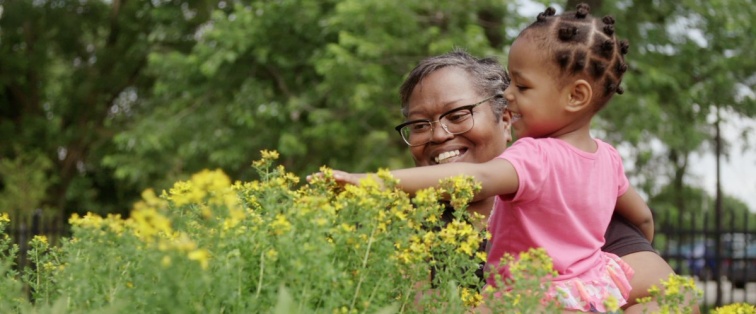Behind-the-Scenes Look at Our New Video

As a communications professional, I live for opportunities to tell stories through different mediums. I’m privileged to work for a research center that prizes communications and was fortunate to receive funding for a video that visually told the PolicyLab narrative and highlighted all of the important work that we do here. People learn in different ways – some folks are more visual, others rely on written word – and so I saw tremendous opportunity in using a tool that we hadn’t yet tapped into, video, in order to reach new audiences.
Crafting the Story
When we first began discussing what the video could look like, we weren’t entirely sure how to boil down our history, research, program implementation work, and valued partnerships into a short, attention-keeping piece. We knew our leaders could best tell the story of PolicyLab’s mission and how we came to be. However, I also thought sharing a specific example of our work would help people more fully understand what we do here. So, I set out to pick one story from our incredible breadth of work.
The story we landed on is the creation of PriCARE, a positive parenting class offered through primary care sites that helps parents and families learn strategies to respond to children’s behavior problems. I chose this example because it showcases the full journey of PolicyLab work: identifying a problem in the clinic of physicians overprescribing antipsychotics to young children for behavior issues, researching to learn the magnitude of this challenge nationwide, developing community-informed policy and practice recommendations to curb this trend, and, ultimately, implementing and evaluating one of those program recommendations within our own community and health care system. This process underlies all of the research we do here at PolicyLab, and the PriCARE example is just one of our many success stories that have come from following this approach.
Organizing the Video Shoot
By including the story of PriCARE, we had to add our investigator who leads the PriCARE work, Dr. Joanne Wood, and one of the PriCARE participants, Beatryce Stone, to the list of interviewees. The final number of people we wanted to interview required preparing for three and a half days of shooting. This meant securing locations around our office that not only had nice backdrops, but had good lighting and wouldn’t be too noisy. For the individuals we interviewed, I drafted a number of interview questions that would hopefully encourage them to speak about their work in a succinct, relatable way. And in advance of their filming date, I sat with each interviewee to run through their questions and how they wanted to answer them. This not only helped them prepare, but aided me in piecing together the story arch that we were building for our video.
But a video with just a bunch of talking heads is not that engaging. Limited by resources, we also had to identify what filler shots we wanted to help tell the story and break up the interviews. Some of those shots were of the space and community that we work in, but we also found opportunities to capture b-roll, or supplemental footage, of my colleagues working or meeting so that we could show the office dynamic and display the size of our group here. (While shooting, we all quickly realized how difficult it is in a meeting to pretend you don’t have a camera in your face, but everyone did a great job with it!)
Putting on the Finishing Touches
What resulted is tens of hours of footage that our producer watched and shaped into a short montage that flowed well and conveyed the messages that are critical to our story. This part was almost more difficult that organizing all of the shoot days! It took several months of collaboration and back and forth with our producer to ensure every little detail was right, from the quotes we chose for each interviewee to the music that played behind their remarks. I relied on our producer’s expertise in visual media and what would look and sound best, and he relied on me to pick the right interview clips, b-roll footage and get buy-in from my colleagues along the way. It truly was a collaborative process at every step, and I couldn’t be happier with the final result.
We’re releasing this video at the start of PolicyLab’s 10th anniversary year, and it was the perfect project to help us reflect on what the last decade has brought. But it also helped us look at our role moving forward as children and families experience obstacles to improving their health and well-being not felt in some time. Thus, this video is much more than a visual representation of our center; it serves as our continued commitment to turning research into actionable policy solutions while being a strong voice for children and adolescents.
Lauren Walens, MA, is a former strategic operations and communications director at PolicyLab.

